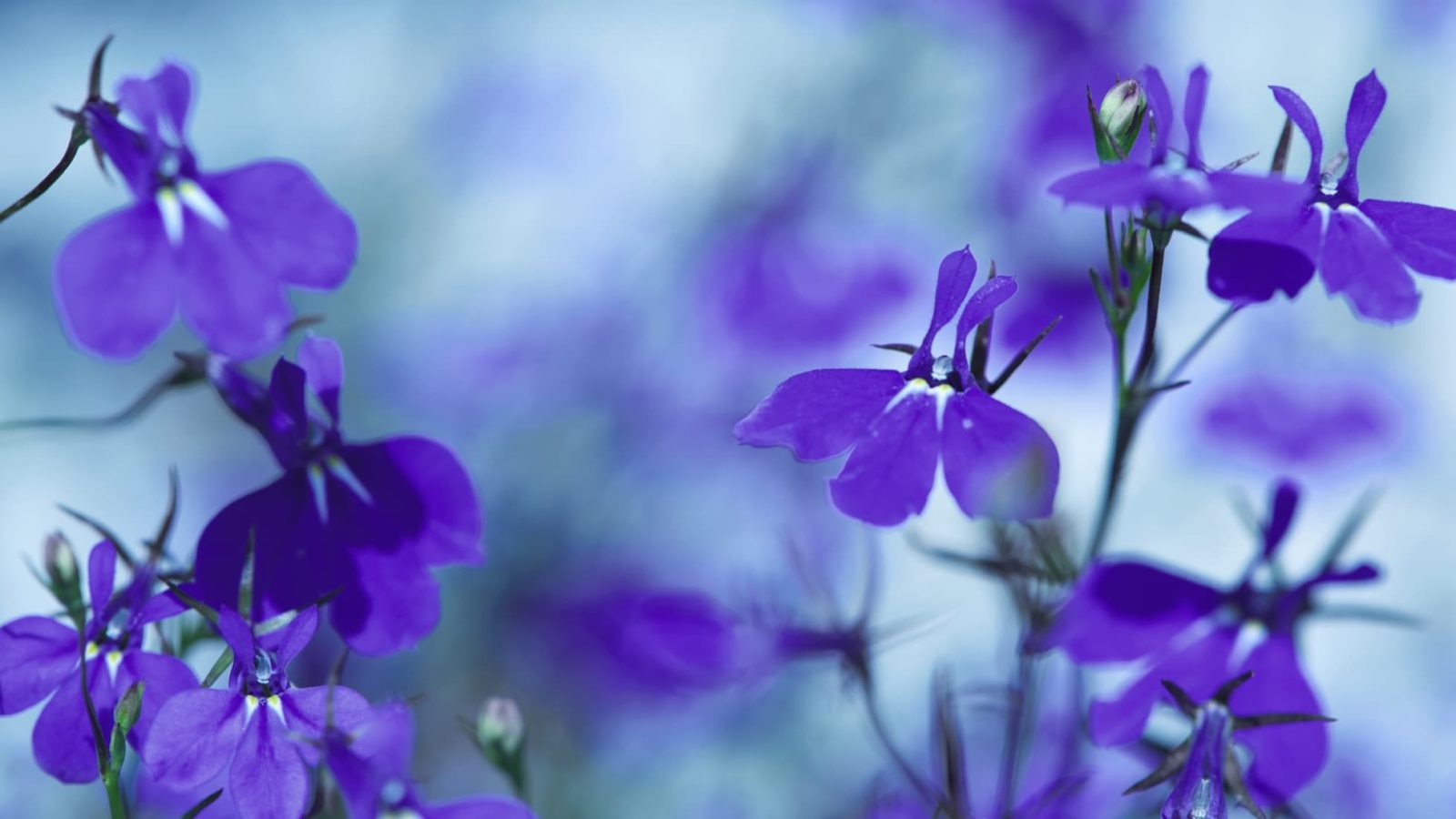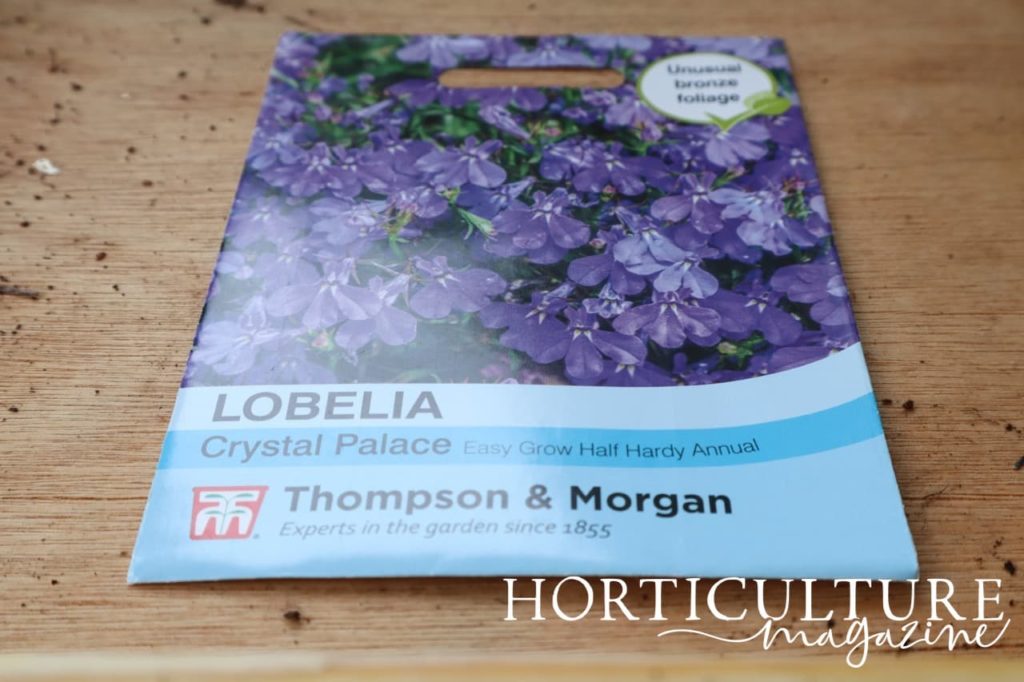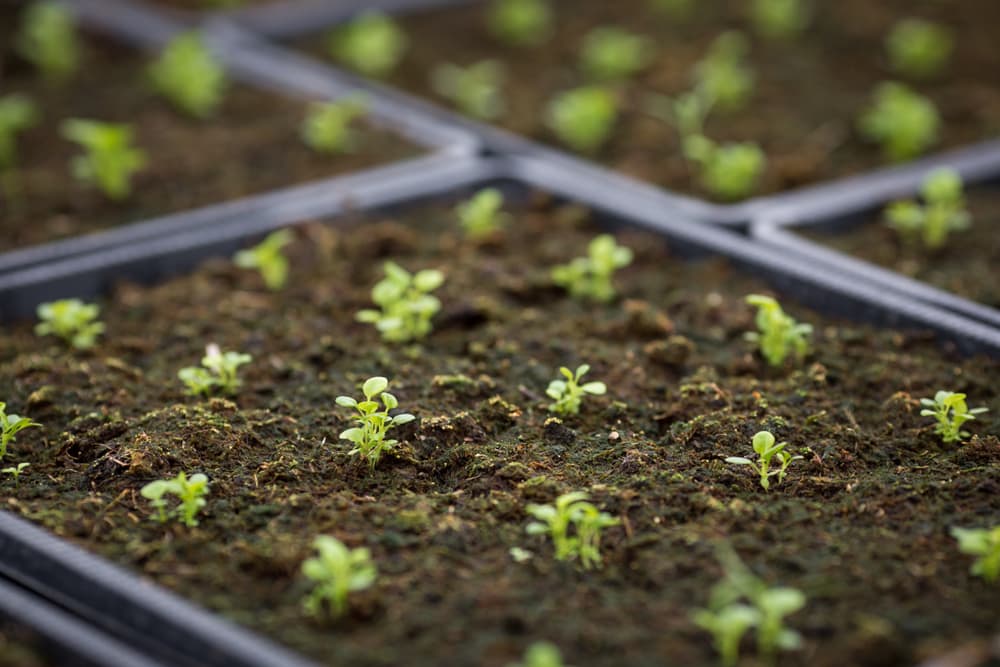Grow And Care For Lobelia Plants – Ideal For A Rock Garden Or Mass Planting In A Bed

PERENNIALS > LOBELIA
Reviewed By DAN ORI

Dan has over 27 years’ under his belt caring for plants and gardens. Working as a Horticultural Instructor and Consultant, he draws on a diverse range of experience that includes working as a Head Gardener, Tree Surgeon, Garden Centre Trouble Shooter, and writer of academic papers. Dan has a Level 3 Diploma in Horticulture and is currently a candidate for the RHS’s most prestigious award – The Master of Horticulture.
IN THIS GUIDE
LOBELIA GUIDES
One may think of Lobelia as a superlative bedding plant and surely it is – but there is much more to this genus.
Boasting plants in numerous shapes and sizes, it is remarkable for the ‘variety’ in its varieties.
This characteristic, in turn, provides a Lobelia ‘customised’ for virtually every garden purpose, with those delightful five-lobed blooms occurring in hues both pastel and brilliant.

Members of this genus, however, do have a few unifying morphological characteristics. First, the leaves are simple and alternate.
Second, the flowers have five lobes (‘petals’) with the upper lip comprised of two lobes and the lower lip of three.
Overview
| Botanical Name | Lobelia |
| Common Name(s) | Cardinal Flower, Blue Lobelia |
| Plant Type | Perennial (Some Annuals) |
| Native Area | North America / South Africa |
| Hardiness Rating | Mostly H3 |
| Foliage | Deciduous |
| Flowers | Showy, two-lipped flowers |
| When To Sow | April, May |
| Flowering Months | July, August, September |
| When To Prune | September, October |
Sunlight
Preferred
Full Sun or Partial Shade
Exposure
Exposed or Sheltered
Size
Height
0.5 – 1M
Spread
0.1 – 0.5M
Bloom Time
July – September
Soil
Preferred
Loam
Moisture
Moist to poorly drained
pH
Any
Genus Lobelia is classified under Family Campanulaceae which has many bell-like flowers.1Berry, P. (2009, February 3). Campanulaceae | plant family. Encyclopedia Britannica. Retrieved March 21, 2023, from https://www.britannica.com/plant/Campanulaceae
Besides the word ‘diverse’ one may use the word ‘versatile’ to describe this genus.
Because of the range in the varieties’ habits and the variety in the flowers’ hues, there’s a Lobelia to suit virtually every garden need though it must be said that many Lobelias are ideally suited for beds.

This is because most varieties’ heights fall between 12-80cm, many bear brilliantly-coloured blooms, even more have prolonged blooming seasons, and almost all are floriferous and self-cleaning – no deadheading required.
That’s quite a few ticks for Lobelia.
Habitat & Growing Conditions
Genus Lobelia is nearly Cosmopolitan, being found in all climatic zones except polar and all biomes except tundra.
Lobelia species are native to all regions except Greenland, Alaska, Northern Africa, and a swath of Central Asia and South Asia but have been introduced in many of those regions too!
As a very diverse genus whose species are native to numerous regions of the world, Lobelias’ habitats have a lot of variation.

As a general rule, many Lobelia species in the wild grow in or near marshes and near waterways – they are found in most any sun-shade mix.
Rich and moist soils suit most Lobelias very well, and they are not put off by heavy soils. However, many species also grow in sandy soils.
When one considers that L. linarioides is native to the temperate and cool southern tip of South Africa while L. oxyphylla is native to the tropical heat of (the lowlands of) Cuba, one can readily conclude that it is difficult to peg down such a varied genus’s growing conditions.2Lobelia oxyphylla. (n.d.). Encyclopedia of Life. Retrieved March 21, 2023, from https://eol.org/pages/5131496
Where To Grow Lobelia
Lobelia is one of those genera that is so extensive and so widely varied that where a Lobelia is best suited to is entirely dependent on the particular variety, to which the flip side is that for almost every garden need there is a Lobelia plant.
If one Lobelia is ideal for a rock garden, another is equally well-suited to a mass planting in a bed.
One variety may be great for a pot on the parapet; another one perfect for a basket hanging by the door.

But do keep in mind that that first variety may look seriously weird in a hanging basket and the second one may look dumpy and awkward in a pot on the parapet!
You will need to take into account the habit, height, spread – and the bloom and its hue – to determine the optimal setting, or at least a very good setting.
Here is one good option for each of the four garden needs mentioned above:
- Rock Garden: L. erinus ‘Crystal Palace’
- Mass Planting: L. × speciosa ‘Monet Moment’
- Pot on Parapet: L. × speciosa ‘Hadspen Purple’
- Hanging basket: L. erinus ‘Laguna White’
As it happens, this selection throws up a very nice assortment of colours: lilac-blue, magenta-pink, intense purple, and pure white.
Perennial Or Annual?
With respect to the popular varieties that are widely available and commonly grown, the fundamental difference is that L. erinus cultivars are hardy only to Zone H2 whereas L. x speciosa cultivars are hardy down to Zone H5.

The upshot is that L. erinus cultivars are grown and treated as annuals in British gardens unless you overwinter them in a sunny and warm spot indoors or in the greenhouse.
In strong contrast, L. speciosa cultivars are treated in the UK for what they are: deciduous perennials.
How To Grow Lobelia
L. x speciosa varieties are often propagated from cuttings or bought as potted plants but are also grown from mixed seeds.
L. erinus varieties are typically grown from seeds.
Lobelia seeds are unusually small and so much so that some seed producers pack several seeds into a ‘pellet’ especially in the United States.
If you see a packet advertising Lobelia pellets, keep in mind that one pellet will germinate into multiple seedlings.
Start the seeds indoors about ten weeks before your region’s last projected frost date with a view to transplanting the plants about four weeks after the last frost.

Seeds can be started in small pots though Lobelias are very well suited to germination in growing trays.
Put seed starting mix in the compartments and simply scatter seeds from above.
Pat them on the soil, and firm up the soil, but do not cover the seeds.
Temperature and light play a big part in the germination of Lobelia seeds – the soil temperature will need to be kept between 16-20°C.
The seeds should get ample sunlight, otherwise set up a grow light over the tray, keeping the soil consistently moist but not wet.

Seeds will germinate in about a fortnight and during the following four weeks you may thin them.
After the last frost, harden the seedlings by setting them outside for progressively longer periods during the day – do so for 7-10 days.
After this time you can transplant them outdoors; be mindful of the habit and spread of the variety and space accordingly.
Plant Care
As we know, Lobelia is an incredibly diverse genus with species originating in and native to widely varied regions.
As a consequence, it is to be expected that the ideal growing conditions and care will also be quite variable.

Therefore, if you obtain an unusual or exotic Lobelia species you will need to ask specialists or do some research as to the growing conditions and care that it requires.
Soil Requirements
A very good soil for Lobelias is a fertile loam of sand, chalk, and clay with some organic manure.
The soil should drain very well though it should be kept almost consistently moist to get the best out of these denizens of marsh and bog.
Though the soil pH may vary from moderately acidic to slightly alkaline, a pH between 5.5-6.5 is ideal.
Sunlight & Temperature
Most Lobelias do not withstand the dog days of summer very well; in hot sun they tend to wilt and lose their flowering energies.

Therefore, in sunnier and warmer regions of the UK it is best to site them where they get morning sun and afternoon shade.
In other regions they will do well in full sun.
Watering & Feeding
Water moderately but regularly. The key is to keep the soil consistently moist.
“Watering is key to success with Lobelia, as it would be expected that you water at least once a day in the summer in standard potting mixes and dry soils,” shares Master Horticulturist Dan Ori.
“There are a few ways to help reduce the amount of water you need.
“Maintain good soil moisture as it takes much more water to rehydrate dry soils, make a water-retentive potting mix of one-third vermiculite, one-third coir, and one-third good quality peat-free compost, and also prevent the soil surface from drying out by mulching around plants.”
These plants are known to be heavy feeders – feed them with a balanced liquid fertiliser about every 20 days until about early July and then switch to a liquid 0-10-10 fertiliser, feeding at the same frequency through the season to keep these plants growing and glowing.
Cutting Back
As summer wears on and if the weather gets hot, many Lobelia varieties will start to flop and look as if they might give up the ghost.
If this happens you may cut back the plant by one-third to a half but continue watering and feeding as before.
When the temperature decreases in autumn the plant will revive and will reward you with fresh blooms.

Common Problems
Lobelias are remarkably disease-free and pest-resistant.
On occasion, some L. × speciosa cultivars succumb to crown rot.
If the disease is not spotted and treated early, which it seldom is, the plant needs to be removed and the soil treated and sanitised.
Crown rot can be avoided by ensuring that the soil is not overly heavy, drains well, and does not stay wet.
Also, it is better to keep the soil line a little too low than a little too high.
Many Lobelias are subject to attack by slugs – they are less of a garden pest and more of a garden nuisance, and not very difficult to get rid of.
References
- 1Berry, P. (2009, February 3). Campanulaceae | plant family. Encyclopedia Britannica. Retrieved March 21, 2023, from https://www.britannica.com/plant/Campanulaceae
- 2Lobelia oxyphylla. (n.d.). Encyclopedia of Life. Retrieved March 21, 2023, from https://eol.org/pages/5131496

